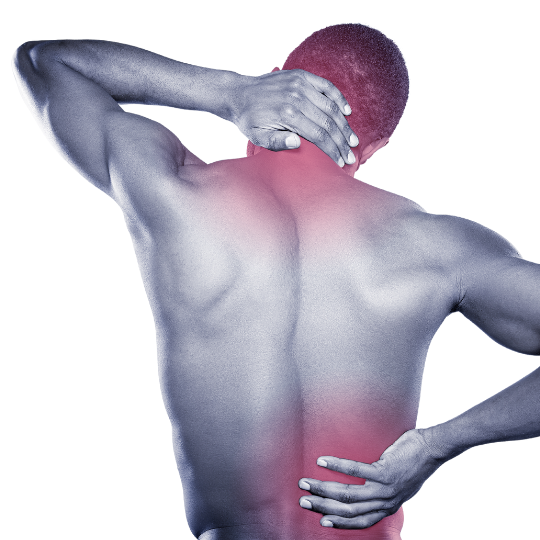Osteoarthritis ataupun radang sendi tulang merupakan penyakit sendi kronik yang berlaku akibat daripada kerosakan pada tulang rawan (cartilage). Ia juga boleh berlaku pada mana-mana sendi namun lebih kerap berlaku pada bahagian sendi lutut dan bahu. Selain itu, sendi lain yang sering dikaitkan dengan osteoarthritis termasuk jari, pinggul, dan tulang belakang.
Walaupun sakit lutut selalunya berlaku kepada individu yang berumur, namun pada hakikatnya ia juga boleh terjadi kepada golongan muda. Satu kajian menyatakan bahawa julat umur pesakit yang mengalami sakit radang sendi boleh bermula dari seawal umur 38 tahun sehingga 83 tahun. Justeru, terdapat beberapa keadaan dimana anda perlu tahu boleh meningkatkan risiko seseorang untuk lebih mudah terkena sakit lutut.
Rujukan: https://www.ncbi.nlm.nih.gov/pmc/articles/PMC8381666/
Keadaan yang berisiko untuk menyebabkan seseorang itu mengalami sakit sendi lutut
1. Mempunyai berat badan yang berlebihan

Mereka yang mempunyai berat badan yang berlebihan adalah lebih cenderung untuk mendapat sakit lutut. Ini adalah kerana, tekanan pada sendi lutut yang bergerak adalah lebih besar jika dibandingkan dengan seseorang yang mempunyai berat badan yang terkawal. Jadi kesannya akan dapat dilihat pada peningkatan kadar penggunaan lutut yang lebih tinggi dan peningkatan kadar penggunaan tulang rawan (cartilage) yang sekaligus meningkatkan risiko osteoartritis.
2. Kurang melakukan aktiviti regangan otot

Otot yang kuat berfungsi untuk memberi perlindungan kepada bahagian sendi yang berdekatan. Oleh itu, jika kekuatan daya tahan otot menjadi lemah ia juga tidak dapat untuk memberikan perlindungan yang baik ke atas sendi yang sekaligus memudahkan ia untuk cedera dengan lebih mudah.
3. Melakukan kerja dan aktiviti yang berisiko

Aktiviti bersukan yang melibatkan larian, berbasikal dan melompat biasanya akan lebih berisiko untuk mendapat kecederaan lutut. Jika dilakukan dalam jangka masa yang lama akan menyebabkan penggunaan sendi lutut berlebihan justeru berisiko tinggi mendapat osteoarthritis pada usia muda. Selain itu, individu yang bekerja sebagai guru, pekerja buruh, petani, pemandu bas, trak, dan lori juga berisiko mendapat sakit sendi lutut atas sebab berdiri terlalu lama ataupun melibatkan aktiviti yang memberikan tekanan kepada sendi lutut.
4. Individu yang pernah mengalami kecederaan lama

Kebiasaannya mereka yang pernah mengalami kecederaan yang berulang kali pada lutut juga akan cenderung untuk mengalami osteoarthritis lutut.
Tanda-Tanda Sakit Lutut
Bagaimana hidrogen dapat membantu merawat sakit radang sendi (Osteoarthritis)?

Amalkan gaya hidup sihat untuk mengelakkan diri anda dari mengalami sakit lutut pada usia muda. Jika anda ada mengalami masalah sakit lutut, Hi-Bliss boleh membantu mengurangkan rasa sakit dan ketidakselesaan anda. Dapatkan rawatan anda sekarang di pusat fisioterapi kami!
Knee problems can affect both men and women. Whether due to athletics, aging, injury, or posture, all can be factors contributing to knee pain. However, women are reported to be 2 to 8 times more likely than men to experience knee pain and injuries, regardless of their level of physical activity1. The World Health Organization also states that 60% of osteoarthritis patients are women2. But how does this happen?

The unique qualities of women's knees can be observed through the differences in their hips. Women's hips tend to be slightly wider than men's, affecting the positioning of their leg bones in relation to the pelvis. Their knees are more likely to tilt inward while the ankles remain spaced apart. This can result in increased stress on the anterior cruciate ligament (ACL), the crucial tissue that connects and stabilizes the thigh bone to the shin at the knee joint. The variation in alignment can also impact the way they walk, run, and perform other lower-body movements.
2. Hormones

Estrogen is known to have positive effects on maintaining bone density and promoting increased flexibility in joints. However, during the menstrual cycle, estrogen levels fluctuate, and when this occurs, it may be associated with a higher likelihood of knee and ankle injuries.
3. Muscle imbalance

In women's muscle development, their quadriceps (front thigh muscles) tend to become stronger than the hamstrings (back thigh muscles), creating an imbalance in muscle strength that can potentially affect joint stability and function. This imbalance becomes evident during activities such as running, jumping, or even simple movements like walking, putting increased stress on the knee joint. This imbalance may contribute to issues such as knee pain, instability, or an elevated risk of injuries, including anterior cruciate ligament (ACL) injuries during those activities.
4.Wearing heels for long period of times
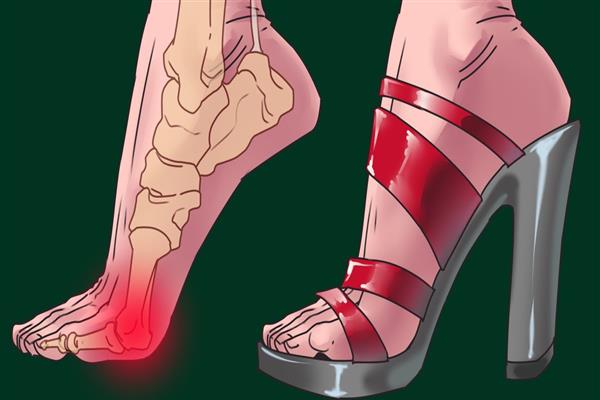
The heightened stress resulting from habitual wearing of high-heeled shoes among women can potentially impact the alignment and function of the knee joint during each step. When wearing heels, the body’s weight shifts forward, placing increased pressure on the balls of the feet and altering the distribution of forces throughout the lower limbs. Over an extended period, the repetitive stress and altered biomechanics associated with wearing high heels can lead to chronic issues.
If knee pain persists, worsens, or is accompanied by other concerning symptoms, it is advisable to seek medical advice for a proper diagnosis and treatment plan. However, if the pain is mild or moderate, it can also be treated at home with self-care measures. Here are some self-care measures that may help alleviate mild knee pain3.

R - Rest: Give your knee some time to rest and avoid activities that may worsen the pain. This can help prevent further irritation or strain.
I - Ice (Cold Packs): Applying ice packs to the affected area can help reduce inflammation and numb the pain. Avoid applying ice directly to the skin. Wrap the ice in a towel or use an ice pack to apply on the painful area. Apply it to the knee for about 15-20 minutes at a time.
C - Compression: Use a compression bandage to help reduce swelling and provide support to the knee. Ensure that the bandage is tight enough to support circulation but not too tight to hamper it.
E - Elevation: Elevating the leg when resting can help minimize swelling. Prop your leg up on a pillow or cushion to keep it elevated.
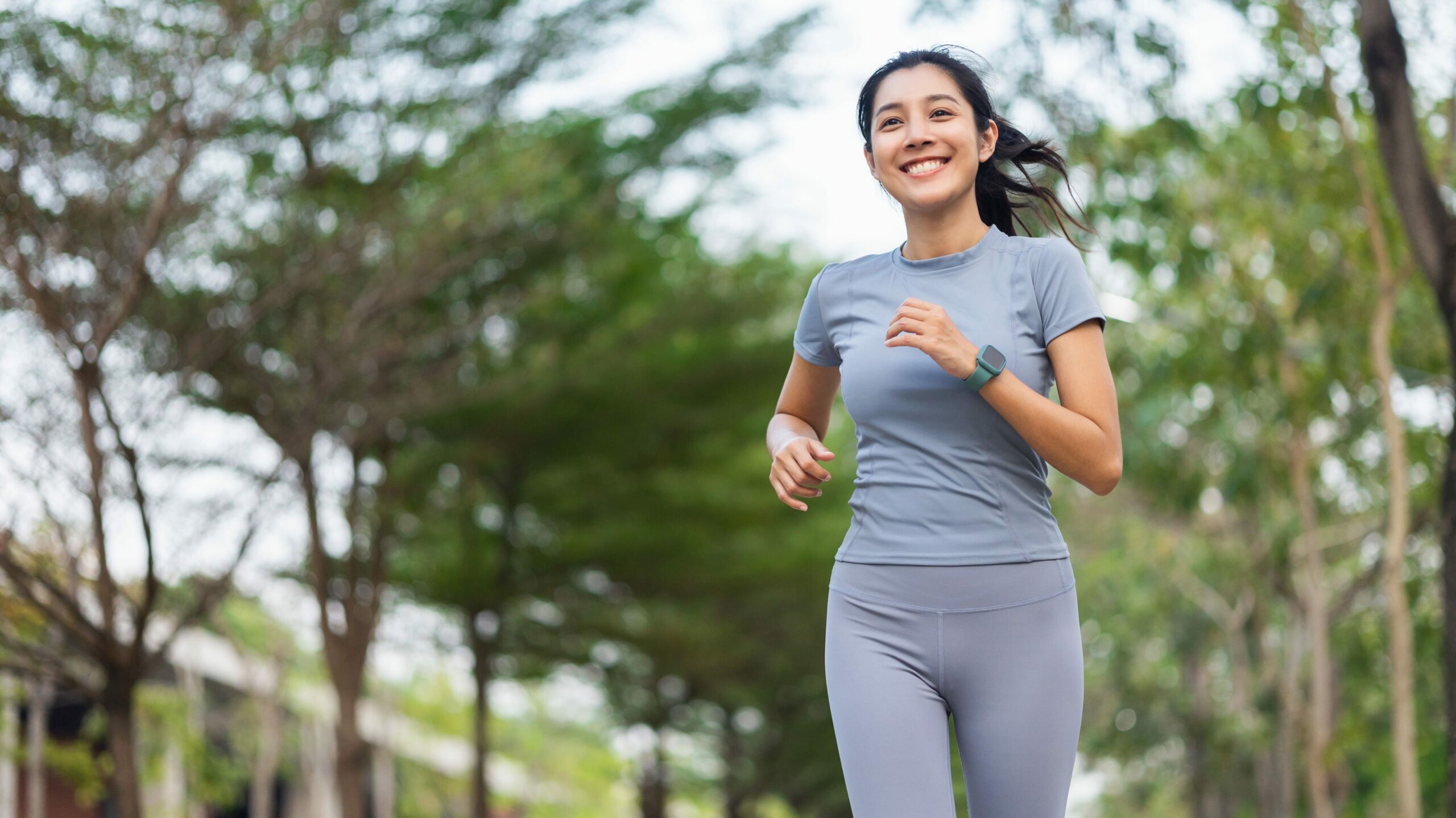
Practice gentle and low-impact exercises to maintain flexibility and strength in the knee. Always warm up before exercising and cool down afterward. Stretch the muscles in the front of your thigh (quadriceps) and in the back of your thigh (hamstrings).
Being overweight can put excessive strain on your knee. Therefore, maintaining a healthy weight through proper diet and exercise can help alleviate stress on the knees.
Wearing shoes with cushioned insoles can help reduce strain on your knees and alleviate knee pain. Choosing supportive and comfortable shoes can also contribute to proper alignment, especially during weight-bearing activities.
However, if your knees are experiencing severe pain, do not delay seeking medical help. It's essential to listen to your body and avoid pushing through severe pain. If home remedies do not bring relief, or if the pain persists, consult with a healthcare professional and physiotherapist for a thorough evaluation and appropriate treatment recommendations.
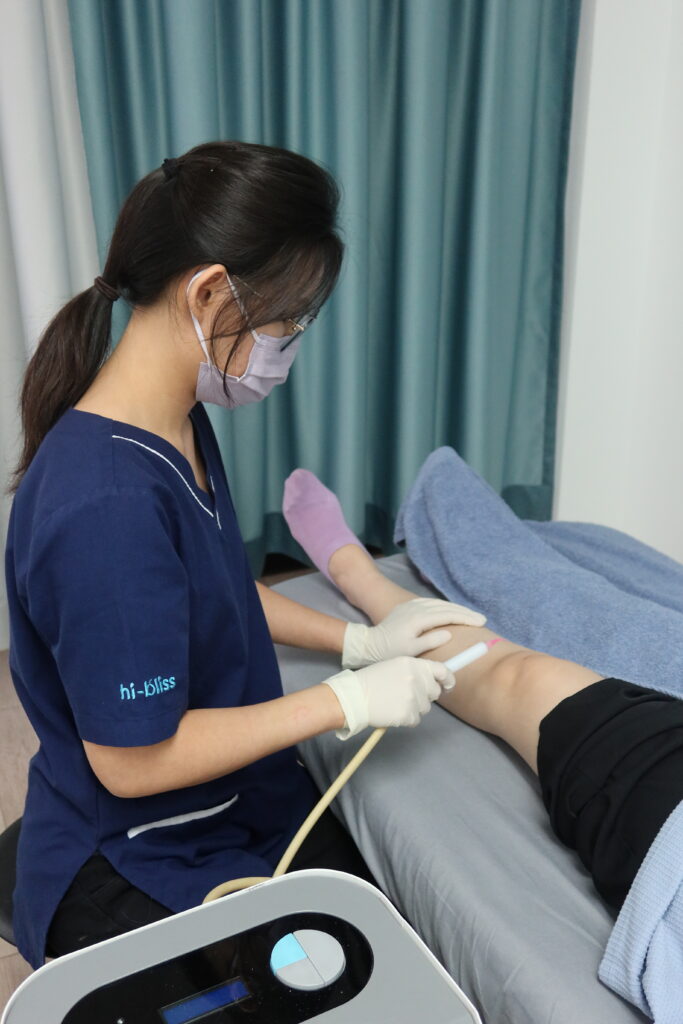
Hi-Bliss Hydrogen therapy combines molecular hydrogen with physiotherapy to address various health conditions, including muscle and joint pain. At Hi-Bliss, we have successfully assisted over 1000 customers suffering from joint pain, particularly in the knee and shoulder areas.
Our hydrogen therapy treatment is primarily 100% natural and non-invasive. You can rest assured as the treatment is pain-free and has no side effects afterward. During the session, patients may experience the infusion of cool air onto their skin, promoting a sense of calm and relaxation.
Moreover, hydrogen's unique ability to selectively eliminate toxic free radicals causing oxidative stress and reduce inflammation in the joint area helps prevent further damage to joint tissues. This therapeutic effect has proven effective in reducing knee pain and providing long-term relief. Protect yourself from potential knee injuries in the future. If you're experiencing pain in your knee or any joint area, consult with a healthcare professional to prevent worsening. Take proactive steps towards healthier joints today with Hi-Bliss!

Osteoarthritis (also known as OA) is a joint condition that affects a significant number of people worldwide, especially older individuals. It is the most common form of arthritis and is a major cause of disability in the elderly population. Osteoarthritis occurs when the cartilage that normally cushions the joints starts to break down, this causes the bones in the joint to not have that much-needed protective layer between them. This causes more friction on the bones and can cause a wide array of symptoms.
Joints that are commonly affected by this condition are mainly weight-bearing joints such as the knees, hips and spinal joints. Osteoarthritis has also been observed in fingers, wrists and elbows too.

The main symptoms of osteoarthritis are joint pain & stiffness. This can cause mobility issues and may affect your ability to remain active. In most cases, symptoms come in waves and can be tied to your activity level and external factors like the weather.
You are most likely to be suffering from Osteoarthritis if you are experiencing:
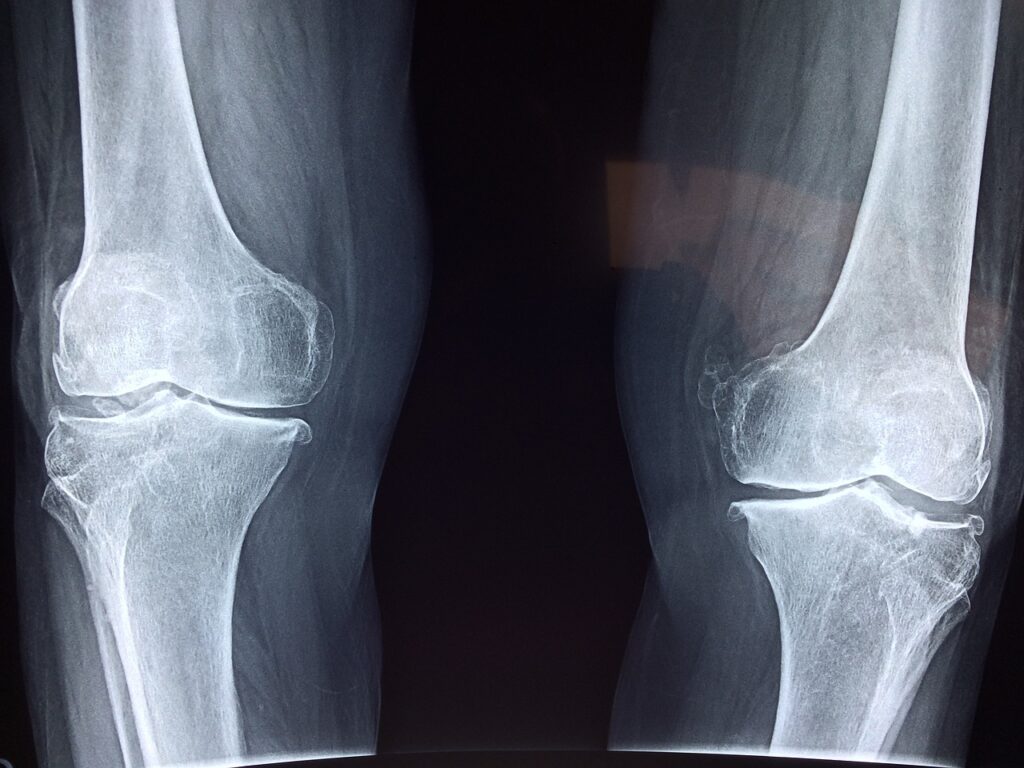
A common form of osteoarthritis encountered is Knee Osteoarthritis. If you are suffering from Osteoarthritis of the knee, you will likely experience pain while walking, particularly when going up or down inclines like hills or stairs. You may hear a grinding or grating sound in your joints while moving it. In severe cases, your knees might even buckle, causing imbalance or difficulty in balancing.
As Osteoarthritis is a leading condition among the elderly, it can be said that there are many risk factors that could contribute to people being afflicted with this condition. Some of these risk factors are within your control but not all of them are.

Firstly, we have joint overuse. Jobs with high physical demand, mainly blue-collar jobs, can cause joints to work overtime every day. This daily overworking of the joints can wear and tear on your joints which can contribute to the development of Osteoarthritis. Examples of job activities that may cause OA in the future include jobs that require:
This is why it is important to take frequent breaks while on the job, especially as you get older. This also applies to people who participate often in high-impact sports like sprinting, boxing or acrobatics.
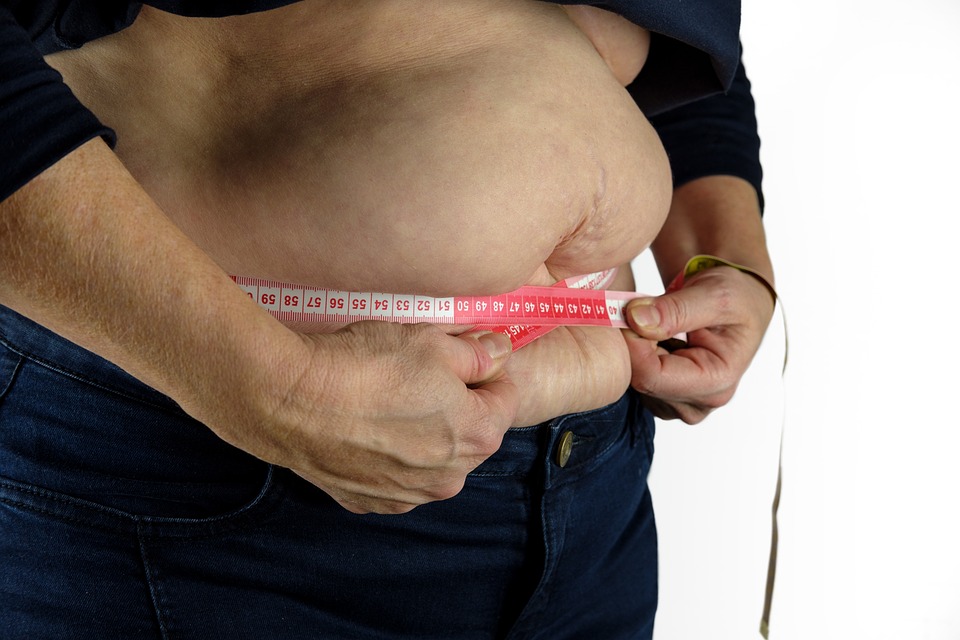
Obesity is a major cause of many health conditions and puts you at risk of developing many severe chronic health issues, osteoarthritis is one of them. According to the John Hopkins Arthritis Center, overweight people have 4-5 times more risk of developing Knee OA compared to a non-obese person! This is likely due to the increased pressure on the weight-bearing joints like the lower back and knees. Managing your weight through a caloric deficit and frequent low-impact exercise like swimming can help prevent osteoarthritis that can occur as a result of obesity.

Poor posture places pressure on your joints. Your head weighs as much as a bowling ball and is supported by your neck, shoulder and upper back muscles. You only get to rest your neck while sleeping. Keeping a poor neck posture places a lot of stress on the joints as your muscles will be stretched out to compensate for the poor posture. In the long-term, poor posture will contribute to wear and tear of your muscles and joints and can develop into osteoarthritis. Most readers will be reading this article on a laptop or phone, this is your reminder to lift your chin and straighten your back!
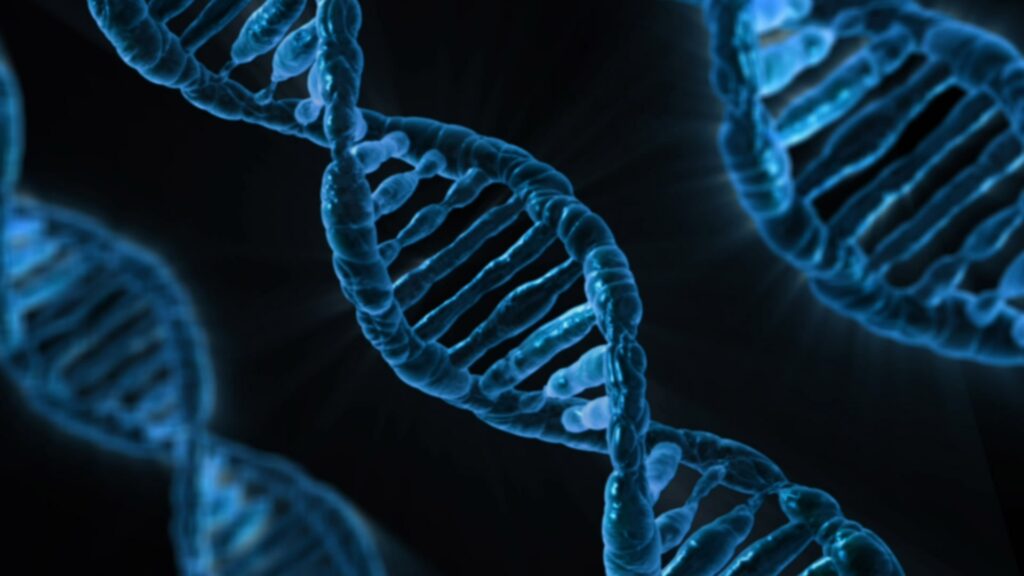
Though people cannot inherit osteoarthritis as a condition, the predisposition to developing osteoarthritis can be genetically inherited. However, the pattern of inheritance or respective genes is still unknown. If you have parents who have suffered from osteoarthritis, then it is important to go for frequent screenings and prevent the preventable risk factors of osteoarthritis as described earlier in this article.
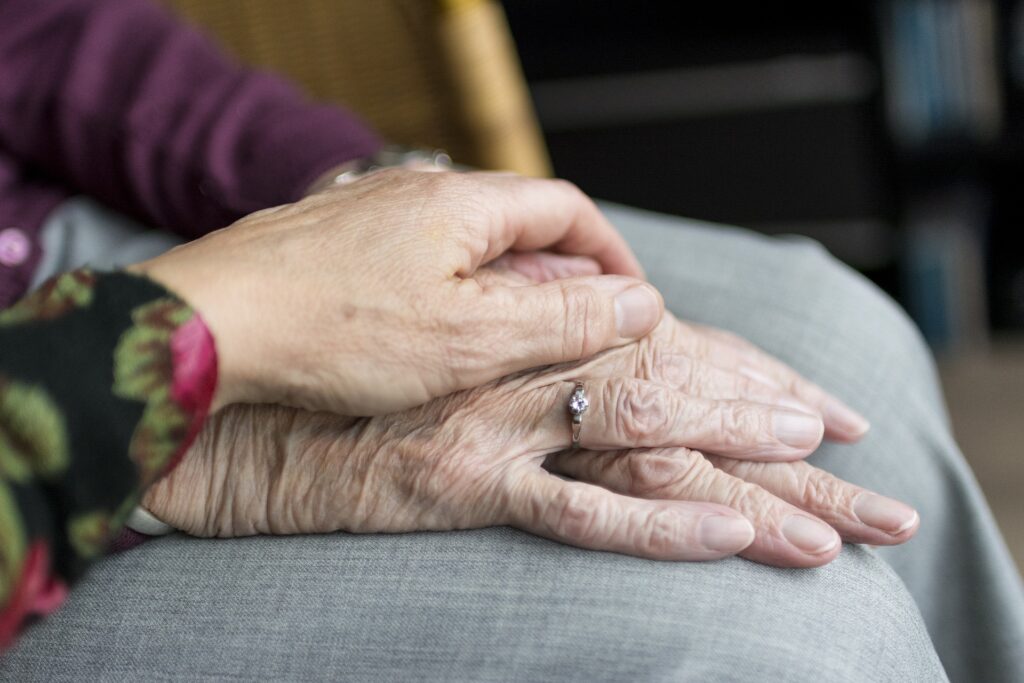
Aging is one of the greatest risk factors for Osteoarthritis and aging is also unavoidable. However, it is important to note that OA is not inevitable for those who are getting older. As a person gets older, their cartilage becomes more brittle, their bone structure weakens and their muscles will degenerate. These all contribute to increased pressure on the joints and can contribute to osteoarthritis.

Arthritis that develops after an injury is called post-traumatic arthritis. This type of arthritis accounts for 10% of OA cases and affects more than 5 million people globally each year. Joint injuries are 7 times more likely to develop into arthritis compared to joints that have not experienced any trauma. As injuries are inevitable in life, the most we can do to manage this risk factor is to ensure that we receive appropriate care and rest for the injured joint while it recovers.
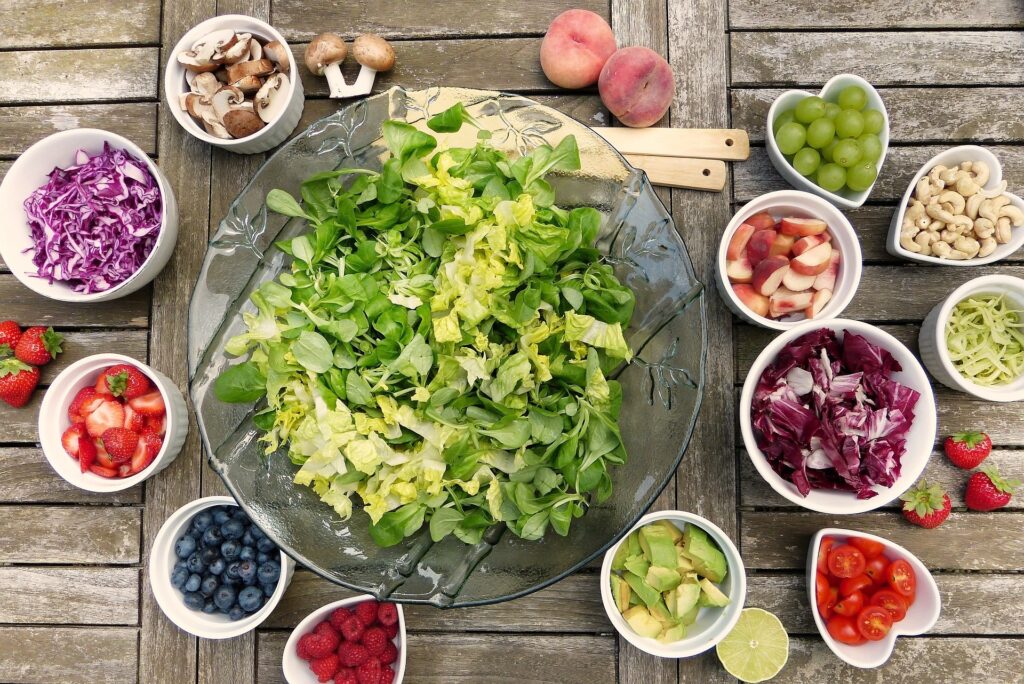
As mentioned above, obese individuals are more likely to develop OA in the future. Extra fat also contributes to changes in cartilage production in the body. There are many safe ways to lose weight including managing your caloric intake and exercising frequently. For more options on weight loss, you should consult a healthcare professional such as a dietician or a doctor.
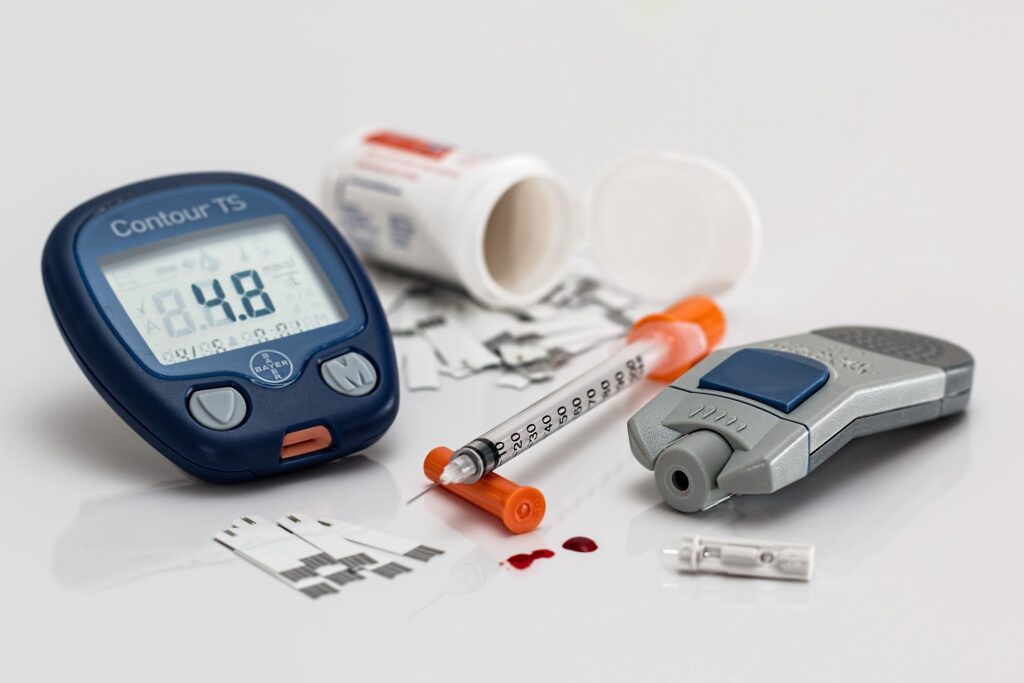
Diabetes is a risk factor that can contribute to osteoarthritis development. Conduct frequent blood tests to monitor your blood sugar.
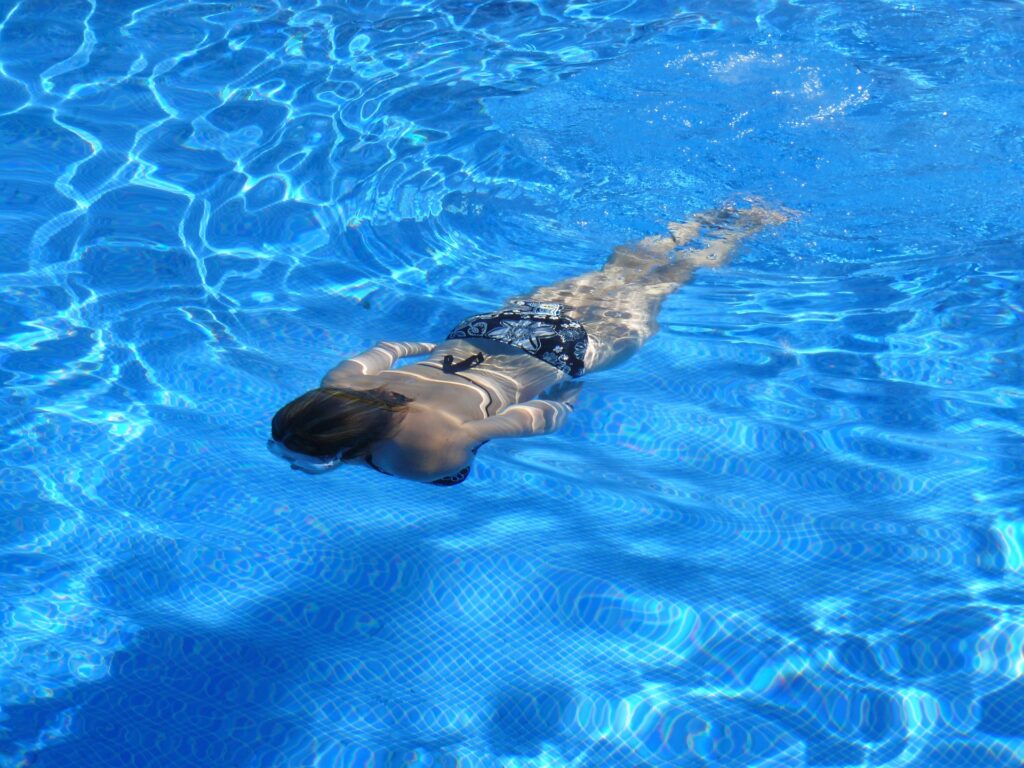
Low-Impact Exercises refer to exercises you can do without placing high impact on your joints. Low-impact exercises like swimming or brisk walking are great for strengthening your muscles, losing weight and reducing pressure on your joints. It is recommended to get at least 30 minutes of exercise or 6,000 steps a day. Though it may be challenging to start exercising frequently, discipline becomes a habit eventually so don’t give up!
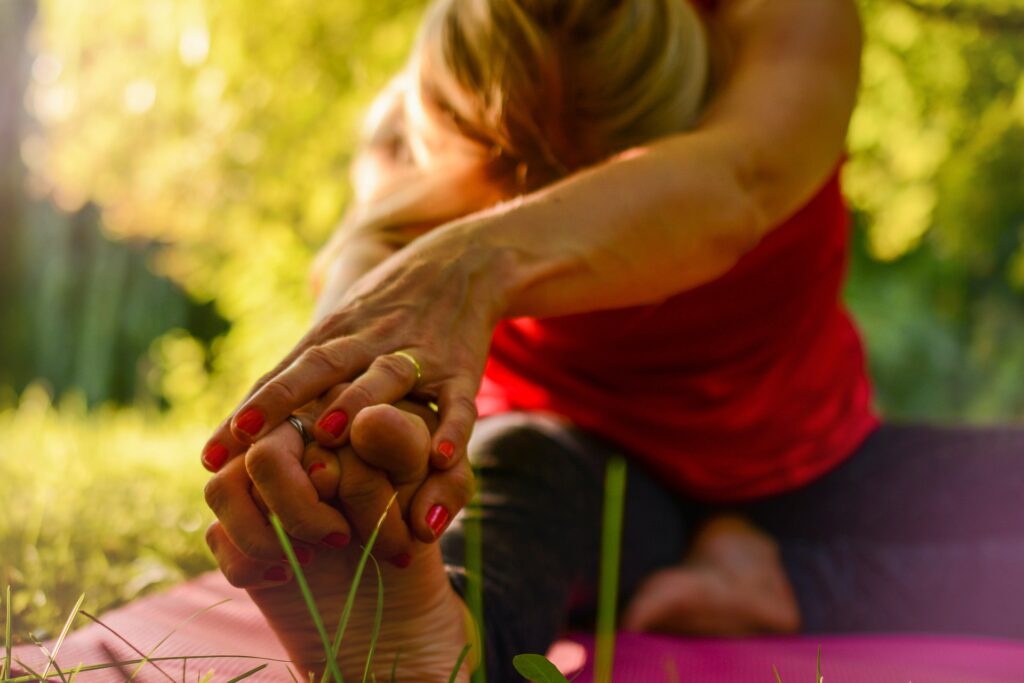
If you experience joint pain that lasts for more than an hour after exercise, you may have caused injury or overworked that joint. Rest the joint and use an ice pack or a hot pack to relieve the inflammation. Consider visiting a physiotherapist or a doctor to assess your condition.
There is no cure for osteoarthritis but there are ways to manage it through medication, devices and tools, therapies, and in severe cases, surgeries.

Medications that may be used include pain relievers, Nonsteroidal anti-inflammatory drugs (NSAIDs) and Counterirritants. There are options available over the counter and as prescribed by the doctor. Anti-inflammatory medication such as corticosteroids can be administered by your doctor.
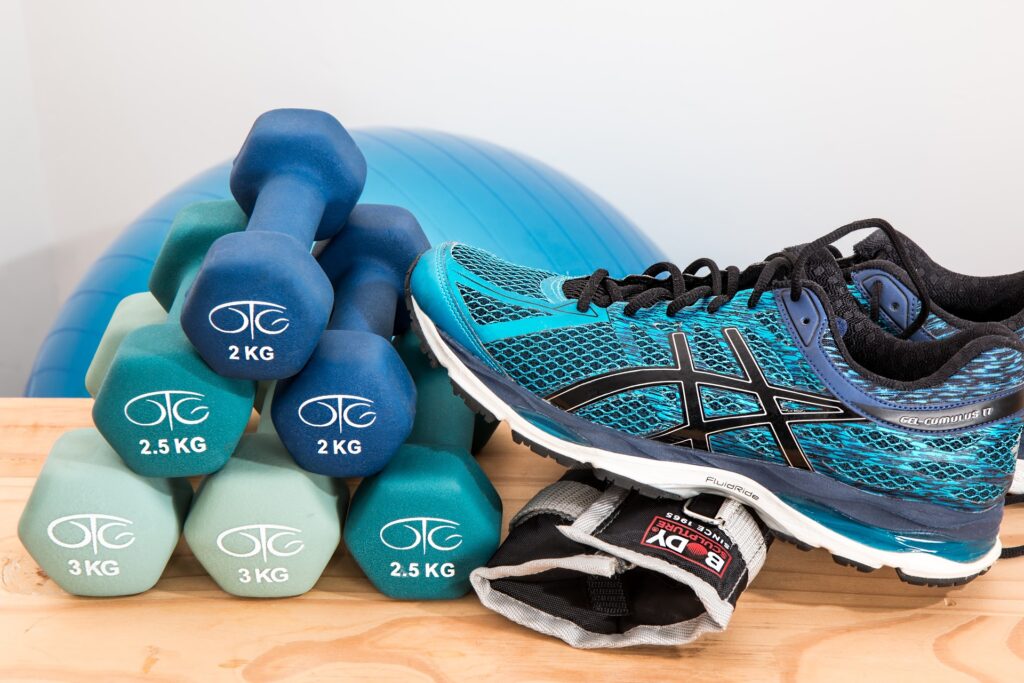
Exercise is a key component of managing osteoarthritis after developing it. These exercises include strengthening, stretching, balance and cardiovascular exercises. Combined with a diet plan to lose weight, these exercises will help strengthen your body and help reduce pressure on your joints.
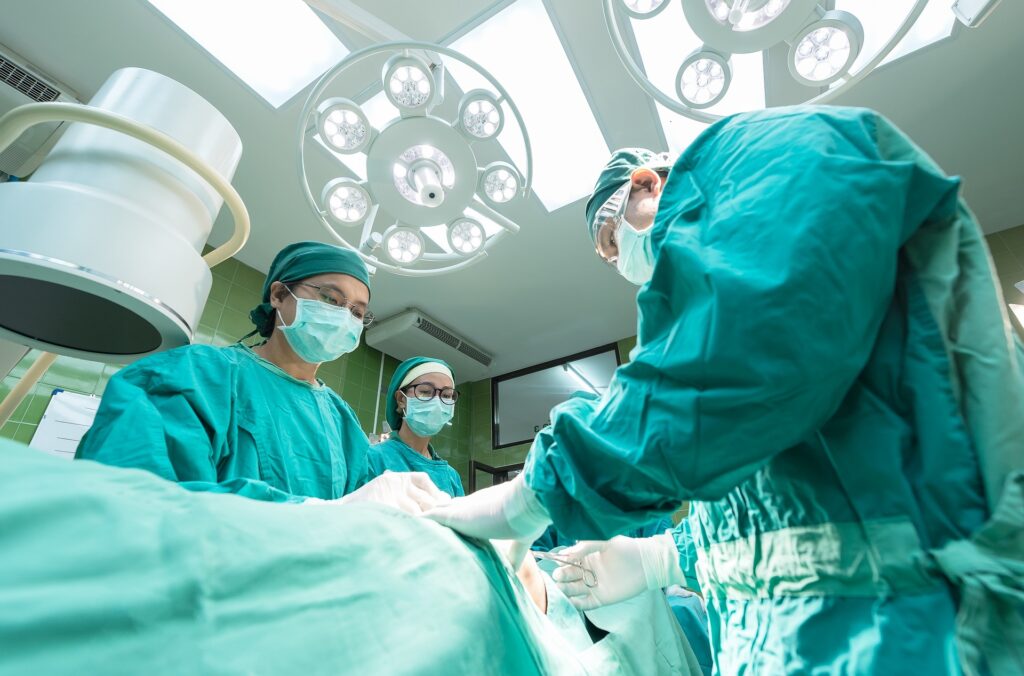
Joint replacement surgery by an orthopaedic surgeon may be an option for you in severe cases. An orthopaedic surgeon will help identify what is the best procedure to be done depending on which joints are damaged and how badly.
Hi-Bliss Hydrogen Therapy combines the anti-inflammatory properties of Molecular Hydrogen and a team of highly-trained physiotherapists to help people who are suffering from osteoarthritis improve their condition and reclaim their active and healthy lives.
During your first session with Hi-Bliss, our physiotherapists will conduct a few health assessments to identify the state of your condition. It will be helpful to bring some of your scans or medical reports from previous doctor visits.
Then, our therapists will perform a palpation check, a sense-of-touch test to identify muscle weaknesses and stiffnesses.
When that is done and treatment points are identified, our physiotherapists will spray molecular hydrogen gas onto your body.
Hydrogen gas is non-invasive but due to its nature as the smallest molecule, it can penetrate your skin painlessly to relieve inflammation in your body and joints. This is done by reducing oxidative stress by neutralising free radicals. There are no side effects to Hydrogen Therapy so no worries and no fuss. All you need to do while undergoing Hydrogen Therapy is just relax!
After being sprayed with Hydrogen gas, our therapists will conduct manipulation on your body. This includes some static stretching and massages.
Finally, your Hi-Bliss Therapist will teach you some basic stretching and strengthening exercises to do at home for a holistic healing experience.
Osteoarthritis (OA) is a joint disease that is characterised by damage to the joints which affects synovial fluid, cartilage, bones, muscles, blood supply and nerves. It happens when the protective cartilage that covers the tips of our bones is gradually worn down and this causes multiple bones to rub against each other. This ultimately leads to pain and eventual loss of function.
Osteoarthritis also affects other connective tissues and muscles related to the affected joint. For example, knee osteoarthritis may affect the connective tissues and muscles in the thighs, calf, buttock and even other joints like the hip and ankle. Having said that, OA does not only affect the knee joint, it also affects the joints in the hands, hips, and spine.
Proper use of the joints will keep it lubricated and this stimulates the repair and rebuilding process. On the other hand, lack of joint use causes the cartilage to become dryer, more brittle and more prone to damage over time. This tends to happen in the parts of the joint surface that is related to ranges of motion that are not being used sufficiently. As time passes, the damage and pain become so severe that it leads to deformities that cannot be corrected and this would leave surgery as the only option.

OA of the knee progresses in stages and takes many years to develop. This condition can be hard to treat because symptoms may not appear until OA reaches an advanced stage. OA is divided into five stages (5) with stage 0 representing a healthy & stable knee. As the stages progress, pain and stiffness increase. Here we will focus on the 4 Stages of OA, from Minor to Severe.
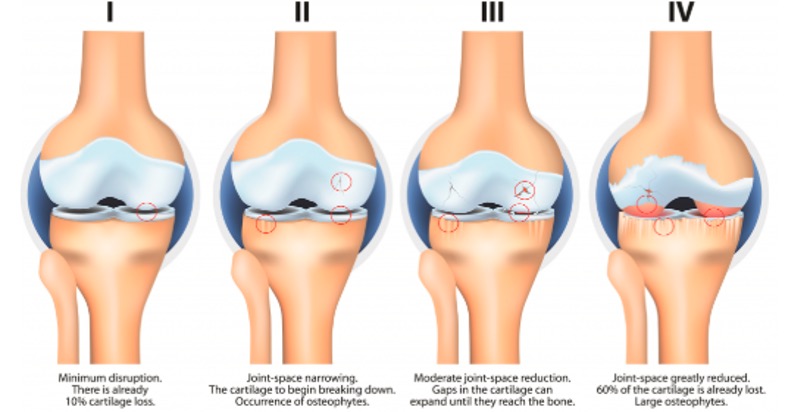
Stage 1 - Minor / Doubtful
Stage 2 - Mild
Stage 3 - Moderate
Stage 4 - Severe
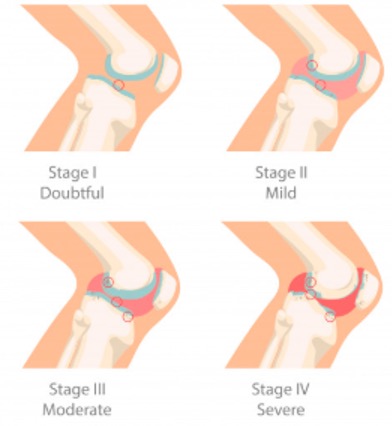
Osteoarthritis can be classified into 2 categories:
Symptomatic knee OA is currently the fourth leading cause of disability worldwide, [4] with an estimated prevalence of 70–80% in the population aged 55 years and older [5]. An ageing Asia with longer lifespan suggests ever-greater numbers of knee OA, among other chronic conditions [6]. The point prevalence of knee OA in Malaysia today is estimated to be 10–20% of the total adult population [7].
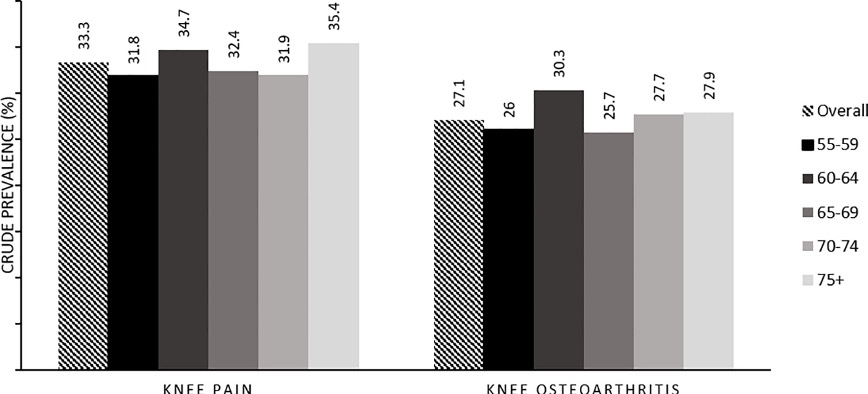

While osteoarthritis can occur in any joint due to injury or abnormality it is much more common in certain joints, particularly weight bearing ones. It is often symmetrical, occurring to some degree in joints on both sides.
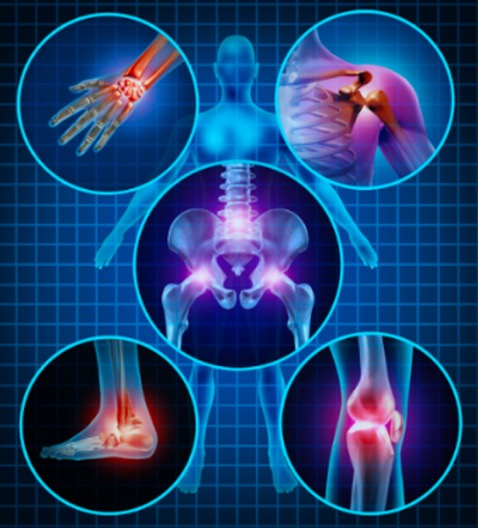
We shall look into the signs and symptoms of OA and how Oxidative Stress can lead to OA in our next Blog.
Learn more how Hi-Bliss Hydrogen Therapy can help slow down the progression of OA here : https://hi-bliss.com/muscle-joint-programs/
Arthritis is a group of painful and degenerative conditions marked by inflammation in the joints that causes stiffness and pain. Osteoarthritis, the most common type of arthritis, gets worse with age and is caused by wear and tear over the years. Rheumatoid arthritis is caused by the immune system attacking the joints as if they were foreign tissues. Because of this, rheumatoid arthritis is classified as an autoimmune disease.
Arthritis is commonly treated with anti-inflammatory medications and painkillers. However, some medications causes side effects, and a natural approach to pain relief is becoming more popular. An estimated 46 million people suffer from the aches and pains of arthritis on a daily basis – and it looks like things are only going to get worse. The CDC is estimating that by the year 2030, more than 67 million people are going to be diagnosed with this painful condition.
For those who are suffering now, relief is here.
You may already utilize hot and cold techniques when you are in pain, but when it comes to arthritis pain, there's nothing that works more quickly or more efficiently than applying different temperatures to the afflicted joints.
The idea behind these two relief techniques is that when you apply heat to an affected area, it can help the muscles and other connective tissue to relax and to release tension. This also reduces the blood flow to the area as your body does not need to warm that body any more with excessive blood circulation.
On the other hand, when you apply cold to an area, you are helping to numb the pain and the aches of that part of your body. And since you are cooling that part of your body, it actually increases the blood flow to the area as your body responds to an upset in the normal temperature.

Most people don't need to be told twice to go get a massage, so if you've been debating it for your arthritis pain, now's as good a time as any to get on a massage therapist's table.
Massage involves the manipulation of the muscles and connective tissues of the body. With direct pressure and movement of these areas, the patient's body can relax and they can release pain. Acupressure, Shiatsu, Deep Tissue Massage, Reflexology are some of the popular massages.

A stiff body is often a sign of a 'stiff' mind, it's thought. When we have stressful thoughts and ideas, we can often project this stress into our bodies in the form of muscle tension – not good for those who have troubles with arthritis.
To help release your mind's anxiety and your body's tension, it can help to have a few relaxation techniques on hand for instant relief. Try Meditation or Deep Belly Breathing to help relax you body and mind.

While it seems contradictory to move around more when you're in pain, this is one of the best ways to free your body from pain. When you try to stay still during a bout of arthritis pain, you should get moving as it will increase blood circulation (and bring warmth to the various parts of your body), prevents your muscles from stiffening and weakening or simply to distract yourself away from the pain.

The surrounding muscles of the tight and aching joints of your body are often more tense than you may realize. But when you are having arthritis pain, that tightness and that stiffness is that last thing you need to have present. You need to loosen things up a bit by taking the time to stretch. Stretching is something anyone can do anywhere, anytime, and the more you do it, the more benefits you will feel.
Stretching will:
• Improve your flexibility
• Improve your balanced
• Soothe stiffness and tightness
• Help to prevent pain from arthritis
Your weight can make a big impact on the amount of pain you experience from arthritis. Extra weight puts more pressure on your joints — especially your knees, hips, and feet.
Reducing the stress on your joints by losing weight will improve your mobility, decrease pain, and prevent future damage to your joints.
The idea that you simply need to change your attitude is probably not the first thing you think of when your joints begin to ache. After all, arthritis is painful, very painful, so what else can you do but complain about it?
However, each time you complain, you can be doing several things to your body:
Yes, an optimistic attitude CAN help your arthritis pain.
When you have arthritis pain, there are a number of different things you can do in order to alleviate said pain. But one of the most effective methods of relieving pain is simply distracting yourself.
The mind is a powerful healing tool, one which many of us forget to use when our bodies are stiff and our joints are achy. While the brain can become hyper-focused on pain, it can be just as easily led to think about not being in pain.
No matter what arthritis treatment you choose, you have many more options than even your doctor may have realized. And with these options comes the power to take charge of your own health and your own pain management process.
While each patient is different, there is a treatment plan for everyone. By using some of these pain relief possibilities, you can experience a life that's less limited and more enjoyable.
Arthritis may be seen as just a condition of getting older, but it doesn't need to be something that stands in the way of your life and of your ability to live your life.
You do have choices – so why not start testing a few out to see what works best for you?
Learn more how Hi-Bliss Hydrogen Therapy and our Osteoarthritis Program can help relief the pain here : https://wordpress-851564-2937612.cloudwaysapps.com/treatment-services-osteoarthritis-therapy/
Osteoarthritis (OA) is a painful, degenerative joint disease that often involves the hips, knees, neck, lower back, or small joints of the hands. It is the most common form of arthritis, affecting millions of people worldwide. It occurs when the protective cartilage that cushions the ends of your bones wears down over time.

Hi-Bliss Hydrogen Therapy and Compassionate Care Foundation was featured in 8TV's Living Delight program on 17th May 2019.
Interested to know more?
Get in touch with us now through these channels below : -
Tel: - 012-2355729
